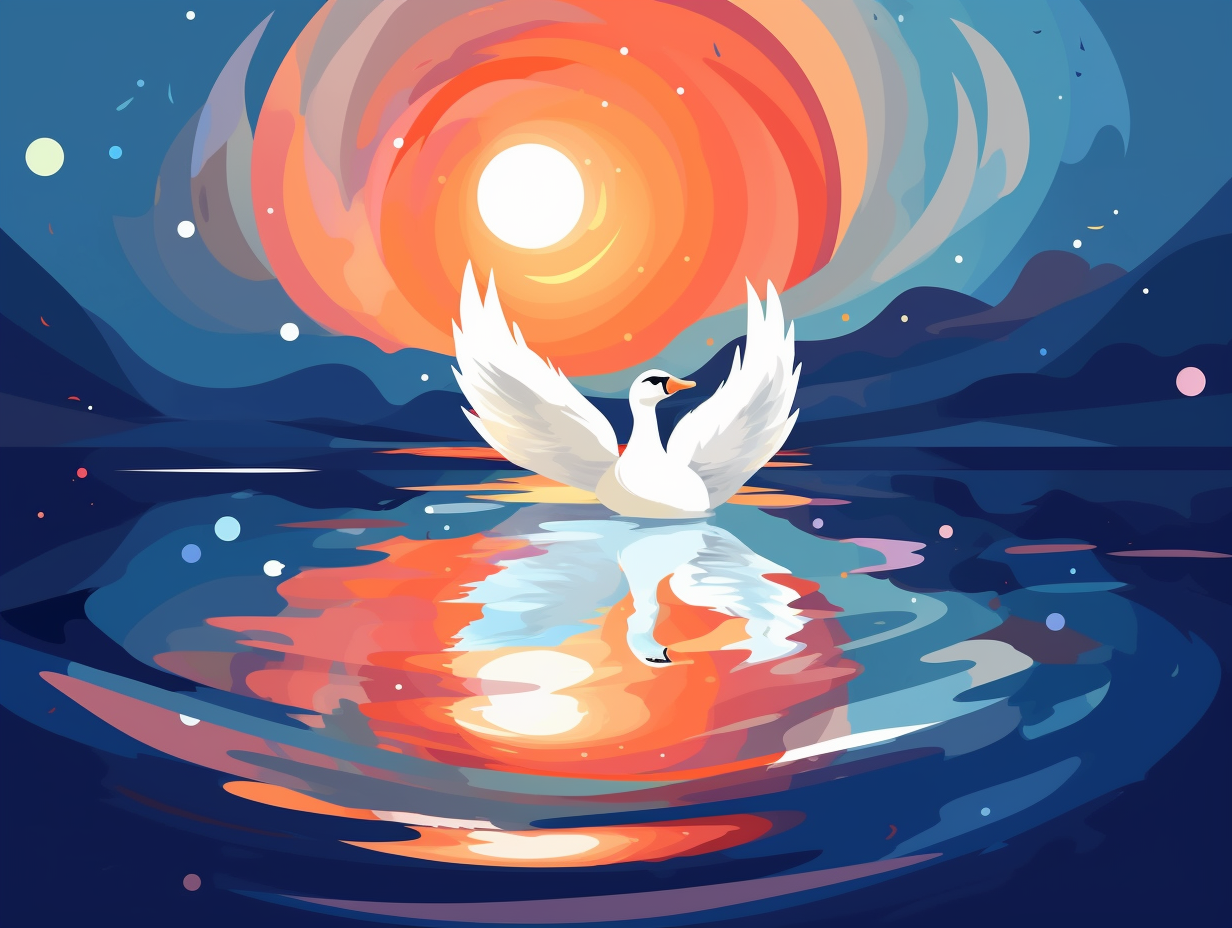Discover the Stars: Top 12 Fun and Fascinating Facts About Cygnus You Never Knew!

1. Swan Tango: Celestial Compass
If a swan and a cross decided to tango in the night sky, it would look something like this: The Northern Cross is actually part of the constellation Cygnus, also known as the Swan, and serves as a celestial compass to find both seasonal changes and the glorious Milky Way's star-studded disk.
Source => earthsky.org
2. NML Cygni: Sun's Massive Rival
Move over, Sun, there's a new big shot in town: NML Cygni, nestled in the constellation of Cygnus, is a red hypergiant star with a radius estimated to be around 1,640 times larger than our very own Sun, though an older 2010 study argues for a slightly smaller yet still humongous size of 1,183 solar radii.
Source => simple.wikipedia.org

Did you know that bouncing on the moon's surface could be the key to maintaining bone and muscle health for astronauts? Discover how ESA's European Astronaut Centre made this out-of-this-world finding! 🌕💪
=> Fun Facts about The-Moon
3. Cygnus OB2: Unbound Star Clique
If Cygnus OB2 were a high school clique, it'd be the popular kids with their own entourage, constantly buzzing around them without ever settling down: This massive star group in the Milky Way is gravitationally unbound, boasting 873 X-ray and spectroscopically selected stars, yet shows no signs of a global expansion pattern or significant dynamical evolution since its highly substructured birth.
Source => arxiv.org
4. Albireo: Stellar Fashionista
Don't be fooled by its beaky name – Albireo's got nothing to do with poultry but everything to do with head-turning celestial fashion: This stellar standout of Cygnus the Swan flaunts a fabulous visual binary system where the brighter star rocks a bold yellow while its fainter counterpart struts on by in shimmering blue.
Source => star-facts.com

5. Kepler-22b: Coolest Planet Next Door
In a stellar rendition of MTV's "Cribs," Cygnus may just be home to the coolest planet next door, and as Goldilocks might say, its temperature is just right: Kepler-22b, the first known transiting planet discovered by NASA's Kepler Space Telescope in 2011, orbits within the habitable zone of a Sun-like star where liquid water could potentially exist on its surface, but its interior decorating and moving-in potential are still under investigation.
Source => en.wikipedia.org
6. Cosmic Square Dance: Circumbinary Planets
Who needs a love triangle when you can have a cosmic square dance?: Kepler-16b, PSR B1620-26b, HD 202206c, Kepler-34b, and Kepler-35b are all confirmed circumbinary planets that waltz around not just one, but two stars in their systems – making our single-star orbits look like wallflowers at the celestial prom.
Source => en.wikipedia.org
7. Cygnus X-1: Record-Breaking Black Hole
Hold onto your X-ray specs and embrace your inner swan-diver: Cygnus X-1, the first black hole ever discovered, is not only chilling in the swanky constellation of Cygnus, the Swan, but it's also a whopping 7,240 light-years away from Earth, making it the largest stellar-mass black hole detected in visible light. This cosmic revelation might just cause scientists to rethink their black hole-creating star recipes and leave them starstruck by the newfound black hole-acity of big ol' stars!
Source => space.com
8. Kepler-37b: Smallest Exoplanet
Move over, Moon! There's a new rock in town, and it's making quite the cosmic splash in a distant constellation: Kepler-37b, located in Cygnus, is the smallest planet discovered around a main-sequence star outside our Solar System, boasting a radius slightly larger than our lovely lunar companion but smaller than the mighty Mercury.
Source => en.wikipedia.org
9. Albireo's Lemonade: Yellow & Blue Stars
When life gives you lemons, Albireo gives you a cosmic lemonade of contrasting yellow and blue stars: The primary component of the multiple star system in the Cygnus constellation, Albireo dazzles amateur astronomers with its striking pair of differently colored stars – yellow and blue. Though seemingly close, these stars aren't gravitationally bound and could actually be at varying distances from our planet. Recent research suggests that Albireo Aa, Ac, and B might originate from the same massive core, possibly the remnants of a dispersed star cluster.
Source => star-facts.com

10. S5 0014+81: Heaviest Cosmic Heavyweight
Feeling a little overweight from the holiday feasts? Try not to sweat it too much; even cosmic giants put us to shame: The hyperluminous quasar S5 0014+81 in Cepheus contains an ultramassive black hole weighing in at a whopping 40 billion solar masses—10,000 times more massive than the Milky Way’s central black hole. Talk about a heavy hitter!
Source => en.wikipedia.org
11. Swan's Celestial GPS: Deneb & Dark Rift
If swans could fly through space, they'd use Cygnus as their GPS: This celestial "Swan" constellation not only flaps its cosmic wings in the northern hemisphere, but also boasts Deneb, a dazzling member of the Summer Triangle asterism, and lies snuggled right up to the spectacularly star-studded Dark Rift of the Milky Way.
Source => earthsky.org
12. Kepler-452b: New Goldilocks Earth
Move over, Goldilocks, there's a new Earth in town: Kepler-452b, a potentially rocky super-Earth, orbits a sun-like star within the habitable zone at a cozy 1.04 AU – meaning it's not too close and not too far, but just right! But don't pack your bags just yet: although it has a mass five times that of Earth and a radius about 1.5 times larger, Kepler-452b might not be the perfect vacation spot as it receives slightly more energy than our home planet and could experience a runaway greenhouse effect. On the bright side, it's been chilling in the habitable zone for a whopping six billion years!
Source => en.wikipedia.org
Related Fun Facts




















